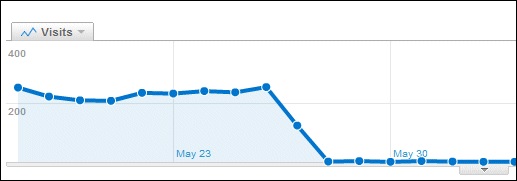If you talk to a consultant or an SEO professional, most of them would tell you that they’ve had experienced being asked to investigate a drop in a website traffic during their career. Most SEO professionals would tell you that they have investigated such changes several times. If you want to know how to investigate SEO traffic drops, you have come to the right place. In this article, we would be sharing with you steps that would be helpful in investigating a drop in SEO traffic. There are some questions that you need to ask yourself. These will guide you in investigating the issues that you encounter with your site’s traffic.
However, before all of that, you need to first determine if the drop that you see in your SEO traffic is real. It could be something that’s normal and the drop in traffic is just a figment of your imagination. In order to determine if the SEO traffic drop is real or not, you need to ask these questions:
- Is the data you have trustworthy?
This might not seem like it’s a big deal but often, SEO traffic drops are a result of inaccurate data. In order to determine if your data is accurate or not, you can check out the other metrics that are potentially affected by data issues. You might not be aware but it’s possible that data is missing on certain days for certain pages and certain devices. Fortunately, it’s easy to figure out a solution when your traffic drop is only caused by data issues. - Is it a normal variance?
The other question you have to ask is whether or not the variance you are seeing is normal. After all, the metrics for your site can fluctuate for no apparent reason. Make sure to use your historical standard deviation for SEO traffic to determine this.
What if you went ahead and asked yourself all these questions and it points out to the very REAL existence of an SEO traffic drop? Here are the questions that you should ask yourself to guide you in determining the culprit that is causing drops in your SEO traffic.
Was There A Recent Algorithm Update?

Check out the most trustworthy SEO blogs to find out if there had been an algorithm update that you were not aware of. If there was indeed an update, you can check it out to see if there’s any reason for you to feel its impact. Track down all the information you can to understand the update so that you would be able to get rid of the risks of your site getting hit by the algorithm update.
Advance Your Digital Reach with The Ad Firm
- Local SEO: Dominate your local market and attract more customers with targeted local SEO strategies.
- PPC: Use precise PPC management to draw high-quality traffic and boost your leads effectively.
- Content Marketing: Create and distribute valuable, relevant content that captivates your audience and builds authority.
Is the Drop Specific To A Certain Segment?
Look through the aggregated data and segment the data you find until you find something. What you should look for is a segment which has more significant traffic drops than any other segments. This can help you track down the root of the issue. You can also check out the segments such as device type and page type because often, these are the segments with the problem.
Are You Experiencing a Penalty?
This might not be the case, but still, you should check. Check the Search Console in case there are messages related to getting penalized. You can also search for your brand or business name on Google. If no results are showing up, it is highly likely that you are being penalized.
Was There A Recent Site Change Prior to the Drop?
If your site has undergone a major site revamp or restructuring or whatever that can be considered site migration, this is a good place to start looking for the culprit for the traffic drop.
Was There a Rise in Direct or Dark Traffic Along With the Traffic Drop You Are Concerned About?
If the answer is yes, make sure that there are no changes in the classification of such traffic on your end. If there are changes, you could be classifying your organic traffic as direct or dark traffic.
Has There Been SERP Changes That Concern You?
Manually checking the SERP will help you find out if the design has changed. Such changes could decrease your organic search traffic.
Is Your Traffic Drop Specific for Branded Traffic? Or Is It Just For Your Unbranded Traffic?

If your historical Search Console data is available, you can check the number of branded and unbranded clicks over a certain period of time. If paid search is also part of your marketing campaign, you can check this data through AdWords as well. If you see that the traffic drop is specific to branded search, this could signify an issue with the brand, not with your SEO.
Are There Missing Pages From The Index?
If you suddenly have fewer URLs being indexed, you might be disallowing or non-indexing URLs without meaning to.
Is There a Drop In the Number of Your Referring Domains? Is There a Significant Link Drop? Did your number of referring domains and/or links drop?
If that is the case, a large number of your backlinks could have been removed. It could be that your backlinks have suddenly become non-accessible for some reason. You can search further to identify why you have lost your backlinks.
Strengthen Your Online Authority with The Ad Firm
- SEO: Build a formidable online presence with SEO strategies designed for maximum impact.
- Web Design: Create a website that not only looks great but also performs well across all devices.
- Digital PR: Manage your online reputation and enhance visibility with strategic digital public relations.
Is SEM Causing Your Traffic to Drop?
If you have paid search involved, it could be that it is eating into your SEO traffic. It is easy to check if this is the case. You can just quickly plot your SEM against your SEO traffic. If it is apparent that your SEM is a factor, it would be better to pause your SEM campaigns for a while to try to get SEO traffic rebounds to those pages that are affected. The problem with SEM and SEO’s traffic is inevitable, but it would be helpful if you are aware of its extent so that you can weigh whether the loss of SEO traffic is worth the benefits of your SEM campaigns.
These are the common questions that can help you find the solution to a drop in SEO traffic on your site. It is important to first figure out what causes the drop in traffic in order to find an appropriate solution.




